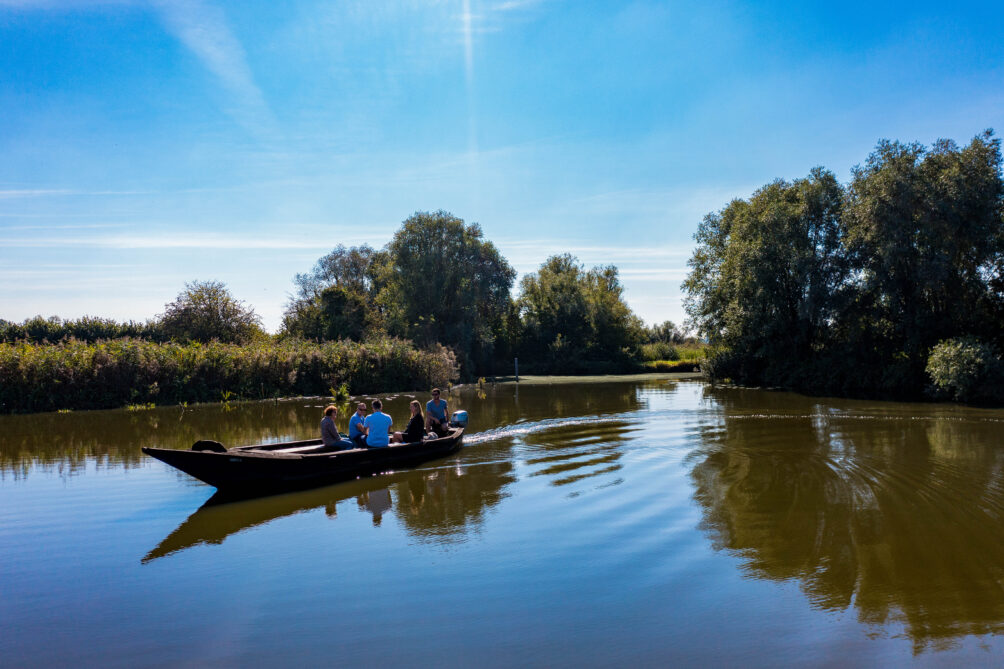Sunlight glints off the water as we sail leisurely past green banks, navigating low hanging branches and making way for the occasional duck. It’s a beautiful way to admire the wetlands of the Audomarois Marshes, France’s last cultivated wetland and a UNESCO-designated biosphere reserve. And a very tranquil spot for a boat trip.
The marshes cover 37 square hectares, close to the city of Saint-Omer in the north of France. They feature 700km of waterways, 170km of which are navigable by escute – a traditional long flat-bottom boat made from oak (you can visit the workshop and see how they are made as part of the boat trip; from £9.50, Lesfaiseursdebateaux.fr/en/)). It’s a nature lovers paradise, with hundreds of different plant species and 240 different types of bird, including grey herons, great crested grebes and little bitterns.
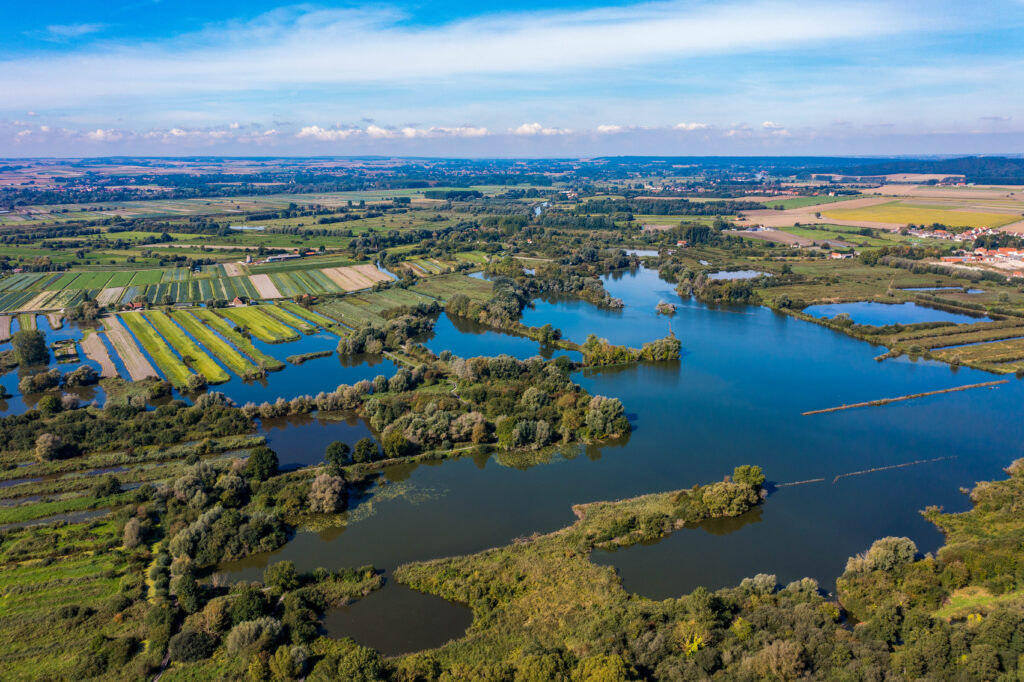
But the marshes are no tourist trap theme park. Over 5,000 people live here, their boats moored on the banks. Children learn to swim and drive a boat as youngsters and with over 50 houses only accessible by boat, the postmen drive boats too. Many of the residents work as market gardeners, growing vegetables – including Saint-Omer’s famous summer cauliflower – in the peaty black soil, a tradition that stretches back almost 100 years.
We meet one of them after our boat trip. Loïc Boulier grew up in Paris but swapped his city life for the marshes 15 years ago and now grows 40 different types of vegetables and fruit in a canal-side garden near the pier. I admire his burgeoning artichokes, shiny aubergines and butternut squash, nibble on fiery mustard leaves and fragrant lemon basil and have my first taste of black cherry tomatoes – delicious!
DINNER AT THE CHATEAU DE BEAULIEU
Loïc supplies fruit and vegetables to local families and businesses, and you don’t have to travel far to taste the local produce on some very fancy dining tables. Like the 2-Michelin-starred restaurant at the Chateau de Beaulieu, with stunning views of the surrounding gardens. I hoover up tiny plates of Cote d’Opale crab, Japanese style tuna and Boulonnais lamb with poached pear among countless other dishes and realise that the secret with tiny food plates is to eat lots of them.
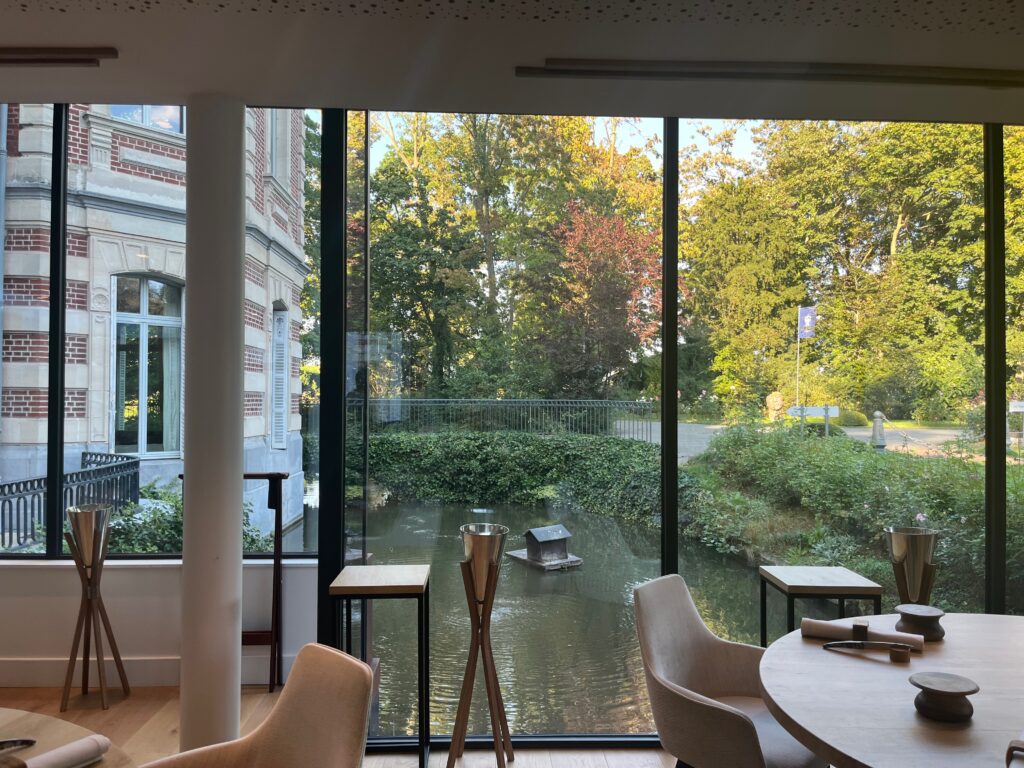
Cauliflower is so beloved in this region that not only did one welcome me in the light-filled foyer on my arrival (encased in delicate porcelain), it’s also the main desert, served meringue style with oozing sorrel sauce and vanilla ice cream. This is followed by a traditional sweet trolley, with shelf upon shelf of handmade wonders. Everything we eat is handmade – in fact I half expected to find a woodwork shop nestled deep in the gardens, churning out the tables and chairs we were sitting on.
There isn’t one. But there IS a menagerie of animals – many rescued and taken here to live out their days in 5-star comfort – including donkeys, goats, geese, rabbits, hens and two big Vietnamese pigs.
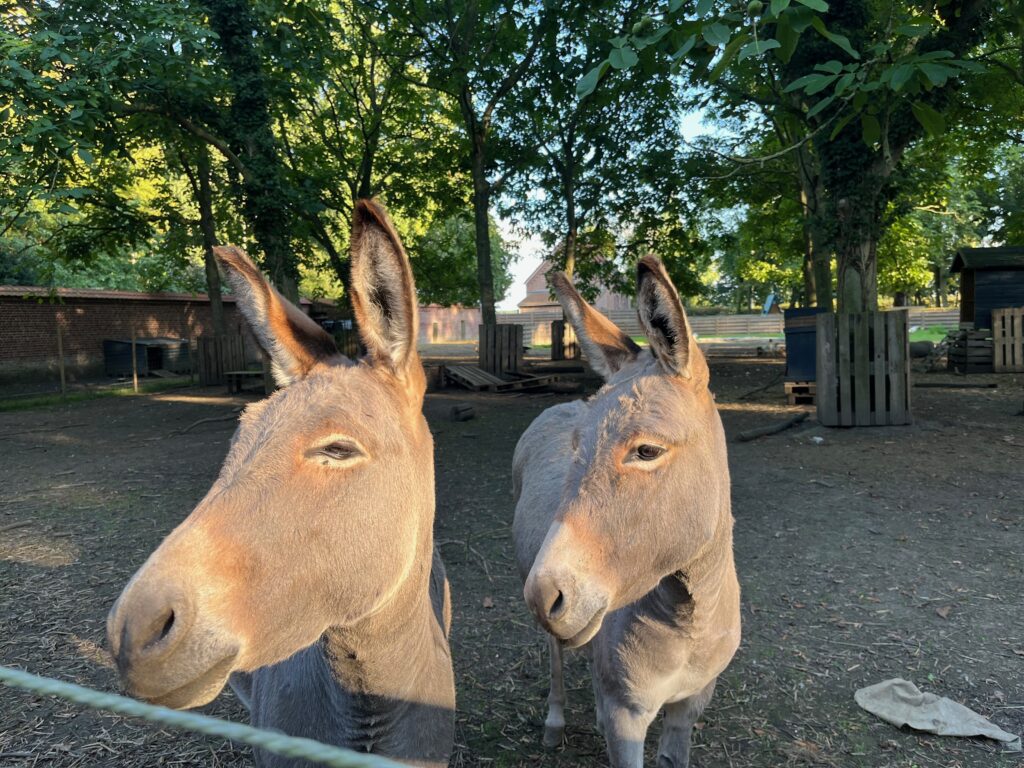
There are vegetable gardens that supply the hotel kitchen with 70% of its needs, the rest is bought locally. Flower gardens provide edible garnishes and colour. A river runs through the grounds, circling the 16th century building, moat-like. From my bedroom – a chic haven with wooden floors and elegantly patterned wallpaper – I can see a fountain, ringed by woodland.
The vibe is relaxed and stylish – from the chic bar with elaborate cornicing to the modern bistro spilling out onto the garden terrace with its fire pit barbecue. Next up, owners Christophe (also the head chef) and Delphine Dufosse plan to open a spa on the grounds with swimming pool and river views (rooms from £240, gastronomic menu from £120, bistro lunch £36 for 2 courses; Lechateaudebeaulieu.fr).
OFF TO THE COAST: HOTEL ATLANTIC
For Michelin-starred dining overlooking the English Channel, the Hotel Atlantic in Wimereux offers fine dining with seaside sunset views. We eat plates of mackerel, mushroom risotto, sea bream and a rich chocolate desert, alongside homemade bread with seaweed and local vegetables, each plate matched to a different wine. Our sommelier is full of stories, passionate about his job and a joy to listen to (rooms from £147, dinner from £82; Atlantic-delpierre.com/en)
There’s a lot to explore in this Hauts-de-France region, awarded the European Region of Gastronomy in 2023 to recognise its cultural and gastronomic heritage. Start off by ditching the vineyards – wine is SO passe – these days it’s all about craft beer and artisanal gin.
WINE? SO OVER!
Exclusive to this area are the award-winning gins produced by the Persyn family, among the last surviving producers of genievre – a type of juniper gin – using the recipes and methods passed down through the generations from the 19th century. The distillery itself is a bit like a museum, with copper stills that have been in use for over 100 years distilling local organic cereal, rye, oats and barley, before it’s matured in oak casks (tours from £6; Genievredehoulle.com)
The craft beer produced in the recently restored Abbaye de Clairmarais brewery has a provenance stretching back to the 12th century – though health and safety regulations have forced them to update their methods since then!

Brewed here by monks until the State took over the abbey after the French Revolution, the current brewery was launched five years ago by a few locals keen to continue the tradition. A tour takes you through the brewing methods and types of beer produced – from mild to pungent – you’ll get a chance to sample them at the end (free tours, book in advance; Abbayedeclairmarais.fr)
SAY CHEESE (GROAN…)
You’ll need something to soak up all that beer and gin and you’ll find it at Les Frères Bernard cheesemakers, surrounded by fields of cows. Cows are quite the thing here, you’ll find pictures of the beauties whose milk has been used to make the produce. You can watch the cheese makers at work through big glass windows from the shop Monday to Friday, 9.30 to 12.
THE BIGGEST FISHING PORT IN FRANCE
Nearby, France’s largest fishing port is located at Boulogne-sur-Mer, where 36,000 tonnes of fish are unloaded every year. Stalls line the footpath in front of the sea, boxes upon boxes of glistening fish, lobsters with tails flapping, crabs and oysters, stallholders cracking jokes with customers. It’s bustling and busy and you won’t find fish any fresher unless you dive for it.
The market is located conveniently close to the port of Calais for our return trip to the UK. We have just time to grab lunch at the Dragon Shed, watching the Calais Dragon go by – a mechanical 12-metre-high dragon that takes groups of people on short city tours, while blowing out water and fire at unsuspecting passers-by (£8.50; Compagniedudragon.com/en).
It’s all great fun and a fitting end to a few days of fun, food and chilling in Hauts-de-France. For more information on the region visit www.visitpasdecalais.com.
Hauts-de-France: Getting there
Travelling to the region from the UK is easy by ferry; DFDS offers up to 30 crossings per day on its Dover to Calais service and up to 24 daily sailings from Dover to Dunkirk. I hadn’t been on the ferry for years and was surprised by the luxury – it’s more ‘cruise ship’, less ‘floating canteen’. Floor to ceiling windows flood the stylish lounges with light and a chance to enjoy sweeping views of the white cliffs of Dover, there are smart dining areas and cafes, shops and outdoor decks with picnic tables and benches.
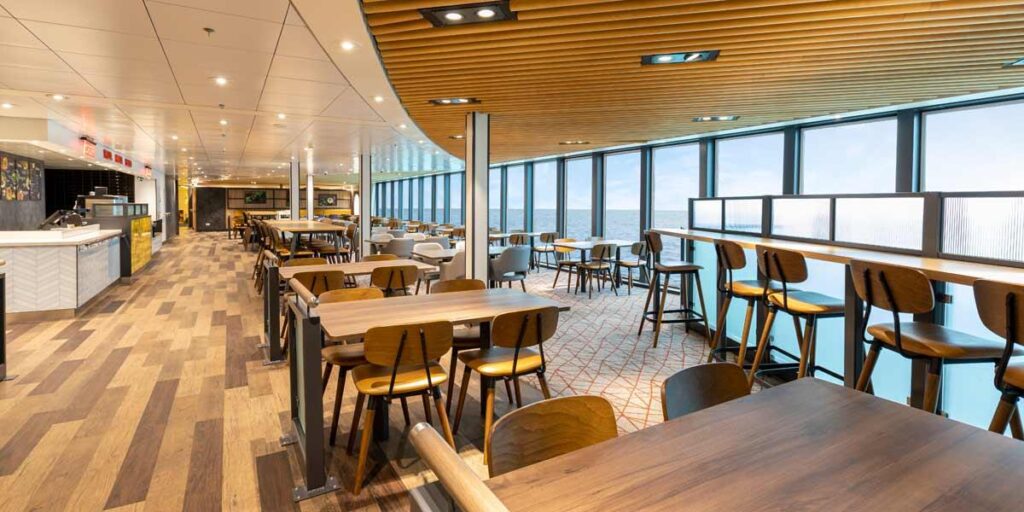
Fares start at £68 one way for a car and up to four people, with day trip and short break fares also available throughout the year starting at £39 return. Upgrade to the premium lounge for the full first-class experience for only £14 per person.
For more information and to book visit www.dfds.com

